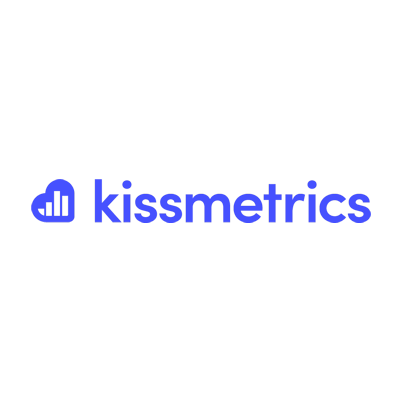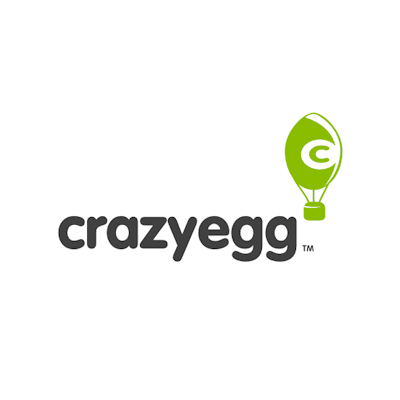Best Tools to Boost eCommerce Conversion Rate
In the world of internet retailing, traffic is not the only thing that counts; what really matters is the ability to sell things to people who reach the site. The eCommerce conversion rate, which is a significant factor in any online business, means the number of visitors to a website that takes a specific action, commonly buying something. In the recent past, due to the high influx of competition in the digital marketplace, it has been more significant for organizations to enhance this rate in the marketplace.

This is true; the conversion rate as a fundamental aspect of the overall design cannot be overemphasized. This is the primary metric that shows how well a site converts visitors into shoppers, thus influencing sales and profits. Marketing efforts will be more effective and efficient, and the overall ROI on the marketing budgets will be higher, thus making the eCommerce business more successful. However, the creation and sustenance of such high conversion rates are not easy. In order to successfully implement an SE, a number of different aspects must be taken into consideration which include technical expertise, marketing skills, and customer psychology.
In this article, we will discuss in detail how to improve eCommerce conversion rates from a technical viewpoint. Further, we will present you with 10+ valuable resources to help you with conversion rate optimization, including the tools and platforms you need to improve and execute these strategies.
Tools to Boost eCommerce Conversion Rate
To answer when and how to execute strategies for boosting conversion rates, we need the assistance of several management, analytical, and specific tools and platforms. These resources are at their best to cater for the needs of eCommerce businesses today. So we cannot miss them when we’re already on the verge of attracting the target customers. Let’s take a look at them.
Analytical Tools
As customer data is essential for boosting conversion rates in eCommerce, analytical tools have been found to be handy. These tools are popular based on the depth of the services they provide, and we can get an idea about this from two of the known analytical tools: Google Analytics and Kissmetrics.
1. Google Analytics
Google Analytics remains one of the most vital tools for any eCommerce store wishing to increase the conversion rate. This incredibly effective and free tool offers detailed information on the performance of the website, its visitors, and its conversion tendencies. Using Google Analytics, you can monitor metrics like bounce rates, average session time, time per session, and number of pages viewed per session, which will tell you how interesting your site is to the visitors. Conversion tracking enables you to define and track certain objectives, like purchase completion or newsletter subscription, providing the precise measurement of the site’s performance in terms of encouraging specific actions.
One of the most useful aspects for eCommerce businesses is the possibility to monitor conversion paths, which indicates where the customers are at the stage of leaving the site. This information is essential to identifying parts of the site that require optimization. Moreover, Google Analytics has very strong instruments of segmentation; this means that you can analyze the behavior of the users in more detail depending on their type, for example, new or returning or according to a source they came from.
Google Analytics is known for its free services, yet its premium version has come to life. Google Analytics 360 is its premium version that covers advanced services, including errorless reports, roll-up reporting for unifying aggregate data, custom funnels, advanced analytics and much more.
2. Kissmetrics

After Google Analytics, Kissmetrics can be a promising software tool for taking data-driven decisions. Even though Google Analytics is known to be a free tool, it still provides premium versions for large businesses, so you can definitely check out this one. As a paid tool, this seems to be the best tool. It is popularly rated as a behavioral analytical tool where users can trust their services as they have a user-friendly interface and integrations with a majority of the e-commerce, email marketing, automation, database, payment and social media platforms.
It is also much more affordable than other paid analytical tools because of its emphasis on individual user behaviors and comprehensive customer support. Because of the personalization it has introduced into analytics, segmentation and targeting customers with emails have become much easier. They use a unique identification system to track individual visitors across several devices.
Besides personalization, they provide detailed reports, including conversion rate reports and customer lifetime value reports. These reports are helpful as they can be customized and filtered to show only the necessary data. This tool can help you visualize the data elements by enabling charts and graphs.
Heatmap Tools
Heatmap tools such as Hotjar, VMO, Lucky Orange or CrazyEgg provide visual information about the users on your website. These tools generate maps of users’ activity and attract attention to the areas of the pages that people like to click on, how far they scroll, etc. Sometimes, this visual information is quite insightful and can reveal usability problems or potential for improvement, which may not be seen otherwise from the statistics.
For example, it might be found that a particular button that should grab users’ attention is ignored because of its position on the screen, or that users tap on an object time and again, which they probably should not be able to do, suggesting that there is ambiguity in your interface. Heatmaps can also reflect how different variants of a page convert during an A/B test and are a great addition to your testing plan. With heatmap tools, one can determine the areas of layout, design, and content placement that will be most effective in increasing the usability factor and, therefore, the conversion rate.

Now, let’s list out some features of the known heatmap tools:
3. Hotjar
Hotjar is known for tracking user behavior using scroll and click maps, session recordings, surveys, and feedback. Overall, it aims to enhance the visual representation of elements that can enhance the user experience and interaction of any website.
4. VWO

VWO (Visual Website Optimizer) provides a range of services, primarily A/B testing, and further looks into how users interact with the website. This is made possible by implementing customization to visual elements, receiving direct feedback from visitors, and strategizing improvements after monitoring the user activity on the webpage. They also provide server-side testing features for technical users.

5. Lucky Orange
Lucky Orange is closely understood for the dynamism it proposes for heat mapping. Their best services include implementing live chat features, session recordings, and form analytics. This one is interesting as it points out why users are frustrated and confused and do not prefer to buy from a particular website. Thus, most eCommerce websites can rest assured with this tool as they can, in the end, reduce cart abandonments while visitors are shopping.
6. CrazyEgg

CrazyEgg is another heatmap tool, and what differentiates it from the other tools is that it can provide you with a confetti report based on referral sources, search terms, and other attributes, along with the scroll map report. You can also view five types of visuals for each result, such as heatmap, confetti, scroll map, overlay, and list.
Email Marketing Platforms
Email continues to be one of the most valuable channels for eCommerce marketing, which means you can use the full potential of this platform with the help of tools such as Mailchimp or Klaviyo. These tools are not just limited to the plain vanilla use of sending emails but provide advanced options related to target mailing lists, customized and personalized messages, and autoresponders. An email marketing platform allows the marketer to design a marketing campaign that will be relevant to customers based on their past actions or their age, gender etc. This level of targeting can bring a very high rise in the engagement as well as the conversion rate.
Another great functionality for the eCommerce site is that it is possible to arrange the email flows. These are the welcome series for new users, cart reminders, order confirmation, and re-targeting the inactive users. Many platforms also offer A/B testing capabilities, allowing you to optimize your email content, subject lines, and send times for maximum impact. Advanced analytics features help you track the performance of your email campaigns, including open rates, click-through rates, and, most importantly, conversions resulting from your emails.
7. Mailchimp

Mailchimp is one of the prominent platforms on which businesses can entrust email marketing. Yet, when it comes to expanding the online presence of any business, there are platforms like Klaviyo that can provide you with the advanced stream of services. Mailchimp is a great option for beginners in the marketing field, as its features, like a simple drag-and-drop editor, and pre-built templates, are easier to work out. Besides these, you can get automated features like welcome emails and abandonment cart reminders with integrations to other platforms like eCommerce and social media.
8. Klaviyo

On the other hand, Klaviyo is an expensive platform compared to Mailchimp. Its features are broader than the latter’s, with advanced and detailed reporting and segmentation. With its powerful ability to collect additional data, you can get in-depth analytics to check into the performance and revenue generated from the email campaigns.
Customer Relationship Management (CRM) Software
Tools such as Customer Relationship Management (CRM) software like Salesforce or HubSpot can be a great help for eCommerce companies that want to increase their conversion rates. These platforms facilitate the maintenance of a centralized system to handle customer relations, sales processes and also customer statistics. As they integrate data on the customer derived from multiple points of contact such as website visits, email communications, purchases, and support tickets, CRM systems offer a comprehensive view of the customer. Due to the highly detailed information available, marketing and subsequent customer-related services can be highly targeted, which, in turn, increases the experience value and conversion potential.
Most of the CRM software offers tools for categorizing your customers: you can target certain groups in your marketing campaigns based on their activity or other parameters. This may be beneficial since it is likely to develop better campaigns and, perhaps, a better conversion rate. Most of the CRM systems also allow for automation of various functions such as lead nurturing or customer reactivation.
For example, you could set up a program to send the customer customized offers for products based on the customer’s activity, such as previous visits to the website or previous orders. Also, CRM systems can perform analytics on the collected customer data to provide more insights into the strengths and opportunities for future improvements that can enhance the overall conversion rate.

9. Salesforce & HubSpot
Both Salesforce and HubSpot are highly rated CRM software, and many businesses favor their services. While Salesforce is suitable for the complex needs of large-scale businesses, HubSpot perfectly fits the use and simplest needs of small and medium businesses. HubSpot is more affordable than Salesforce, including CRM, marketing, sales, and customer service tools. With its user-friendly interface and simple automation features, businesses can check on their marketing and see why there are lags in boosting conversion rates.

Salesforce is much more complex that it goes for advanced services in analytics, integrations with third-party, automation, and scalability. Thus, introducing advanced methods into such a platform requires technical expertise to work out these features. If needed to bring a solution to the complexity of businesses, Salesforce can be the one you can choose as it covers a broader set of tools and custom workflows.

Social Media Platforms
Marketing through social media sites such as Facebook, Instagram, and Pinterest is crucial to e-commerce businesses as these sites provide useful tools for branding, customer interaction, and sales. These platforms enable one to present their products more attractively, getting to a more relevant demographic and even creating a culture around the brand.

Thus, Facebook and Instagram, in particular, provide rich facilities for advertisement placement with sophisticated targeting capabilities, which will help to address potential clients. Their shopping tools, like Instagram shopping and Facebook shopping, allow you to set up seamless shopping experiences right within the platforms, eliminating barriers to purchase. Pinterest, with its focus on visual discovery, can be particularly effective for certain product categories, allowing users to save and share products they’re interested in.
Apart from the publicity and selling, the social media platforms present endless chances for customers’ interaction and satisfaction. Interacting with the stakeholders through responses to comments and messages, as well as reposting user-generated content, will help in building trust with the audience.
Conclusion
Improving eCommerce conversion rates is not a one-step process, and it needs a proper plan, constant improvement and effective tools. It is possible to make shopping experience in eCommerce businesses better and less painful for the customers.
You may have seen tips followed by many online businesses to avail of free shipping, optimize product pages and checkout processes, create urgency, and personalize the shopping experience. To convert this mere tip into a reality, we need the best resources available, and here we are with everything covered in this article.
In addition, applying the resources mentioned, including analytics tools and marketing automation platforms, businesses can get more profound knowledge of the consumers’ behavior, optimize their processes, and make proper improvements to increase the conversion rates constantly.
Conversion rate optimization is not a one-time task but continuous; therefore, be consistent with your efforts. The nature of eCommerce today remains dynamic, and the customers are always demanding. Thus, by being aware of the trends, conducting experiments, and using technology as a tool, eCommerce companies can adapt to the changing environment and reach steady growth in the conditions of growing competition in the digital world.
About the Author

Rithesh Raghavan is the co-founder of Acowebs, an online store for eCommerce plugins. Having a rich experience of 15+ years in Digital Marketing, Rithesh loves to write up his thoughts on the latest trends and developments in the world of IT and software development.







